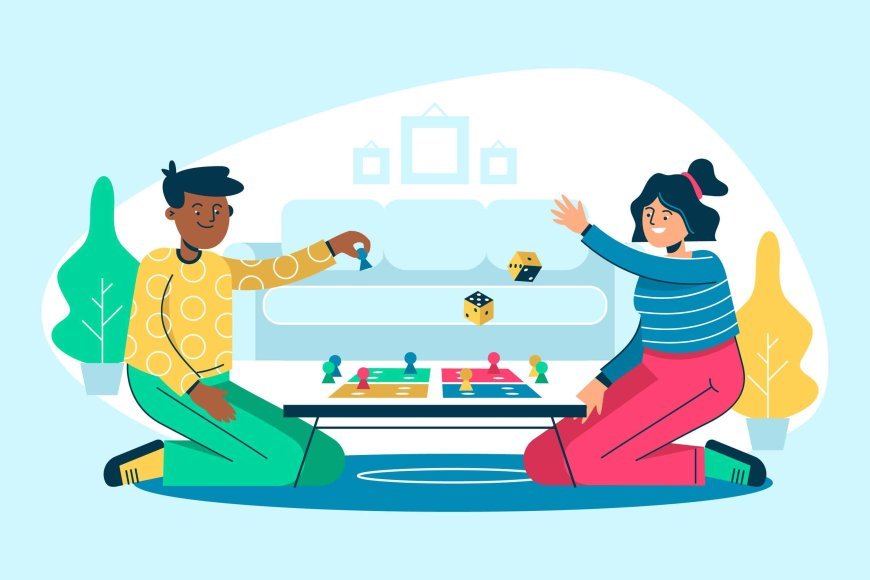Multiplayer Magic: Building Real-Time Gameplay for Ludo and Other Board Games

In a digital world where user engagement hinges on real-time interaction and competitive fun, multiplayer functionality is no longer optional—it’s essential. This is especially true for traditional favorites like Ludo, which have made an explosive comeback through mobile and web-based platforms. The success of any Ludo game development project or digital board game lies in delivering a seamless, responsive, and immersive multiplayer experience.
In this blog, we explore how real-time gameplay is built into Ludo and other classic board games, what technologies power these experiences, and how a skilled Board Game Development Company can turn your game concept into a polished product.
Why Real-Time Multiplayer is the Heart of Digital Board Games
Let’s start with the obvious: board games are inherently social. From rolling dice and moving tokens to blocking your friend's move, it's all about interaction. In the digital realm, that same engagement needs to be recreated—but with added challenges like latency, synchronization, and player connectivity.
Whether you’re developing Ludo, Chess, Snakes & Ladders, or a new original concept, adding real-time multiplayer opens up opportunities for:
-
Competitive tournaments
-
Real-time chat and reactions
-
Cross-platform play
-
Global leaderboards
-
Viral sharing and invites
Multiplayer transforms a simple game into a thriving ecosystem.
The Technical Foundation of Real-Time Board Game Development
Real-time multiplayer may look effortless from the user’s point of view, but under the hood, it requires careful planning, solid architecture, and optimized coding practices. When undertaking Ludo game development, here are key technical considerations:
1. Client-Server Architecture
Real-time multiplayer games typically rely on a client-server model. Each player (client) communicates with a centralized server that maintains the game state. This ensures:
-
Synchronized moves
-
Cheat prevention
-
Consistent game flow
The server becomes the authority, verifying dice rolls, movement, turn order, and rule enforcement.
2. Socket Programming
Sockets are the core of real-time communication. WebSockets or TCP sockets enable bi-directional, low-latency data exchange between client and server. This is what allows a player’s move in Ludo to instantly reflect on the screens of other players.
Popular frameworks include:
-
Socket.IO for Node.js
-
Photon for Unity-based apps
-
Firebase Realtime Database (for simpler use cases)
Choosing the right technology stack depends on the scale and complexity of your game.
3. Matchmaking Logic
In real-time games, matchmaking is the process of pairing players. You can opt for:
-
Random matchmaking
-
Room code invitations
-
Skill-based pairing (based on win/loss ratio)
An experienced Board Game Development Company will design flexible matchmaking logic tailored to your audience and gameplay style.
4. Turn-Based Synchronization
In board games like Ludo, turn order is crucial. The server must broadcast whose turn it is and reject inputs from other clients during that time. Timers can be added to enforce time limits, encouraging pace and fairness.
5. Network Optimization
Even minor lag or disconnection can ruin the user experience. Developers need to handle:
-
Packet loss
-
Delays
-
Reconnection attempts
-
Session recovery
For example, if a player disconnects mid-game in Ludo, the system should either pause or hand over control to an AI until the player returns.
Building Ludo: Multiplayer Done Right
Let’s focus on Ludo specifically—a game that’s deceptively simple, yet full of intricacies when developed for multiplayer. A solid Ludo game development approach involves:
-
Random Number Generation: The dice roll must be server-validated to prevent tampering.
-
Pawn Logic: Rules like entering the board, capturing opponent pieces, and reaching home must be enforced server-side.
-
Animations: Each move should trigger animations that play out in sync across all devices.
-
In-Game Chat or Emotes: To retain the casual, fun vibe of playing with friends.
-
Game Recording & Analytics: Useful for leaderboards, anti-cheat, and user retention.
Top developers also implement AI fallback modes, so users can switch between multiplayer and single-player without friction.
Tools & Platforms We Recommend
As a seasoned Board Game Development Company, we often choose from the following tech stack:
-
Unity + Photon Engine for high-performance multiplayer 3D/2D games.
-
Node.js + Socket.IO for web and mobile hybrid apps.
-
Firebase for real-time data syncing on simpler games.
-
AWS GameLift or Azure PlayFab for scalability and backend support.
We also integrate third-party SDKs for monetization (AdMob, Unity Ads), analytics (Google Analytics, Mixpanel), and social login (Facebook, Google, Apple).
Challenges and Solutions in Multiplayer Board Game Development
❌ Challenge 1: Latency Issues
Even a few seconds of lag can disrupt a Ludo match.
✅ Solution: Use lightweight data packets, compress game state, and host servers regionally for faster response.
❌ Challenge 2: Player Dropouts
Players leaving mid-game can frustrate others.
✅ Solution: Add reconnection logic, auto-play by AI, or give opponents options to end the game early.
❌ Challenge 3: Cheating and Exploits
Players may try to hack dice rolls or exploit bugs.
✅ Solution: Move all critical game logic server-side. Obfuscate client-side code. Use anti-cheat algorithms.
Future of Multiplayer Board Games
As technology evolves, real-time multiplayer will get even more sophisticated. Expect to see:
-
Voice chat integration
-
AR-based board games
-
Blockchain-secured digital ownership of in-game items
-
Cross-device play (Phone vs. Smart TV vs. Smartwatch)
Ludo and other classic games will continue to thrive in this environment—as long as they're backed by thoughtful design and robust technology.
Final Thoughts
Multiplayer functionality is what gives board games their edge in the digital marketplace. Whether you're reviving a timeless classic like Ludo or creating a brand-new strategy game, real-time interaction keeps players engaged and coming back.
At our Board Game Development Company, we’ve helped clients bring their game ideas to life with stunning multiplayer experiences. From building the backend to designing sleek UI/UX and implementing AI, we offer end-to-end Ludo game development and board game solutions.
If you’re ready to take your game idea to the next level, we’d love to hear from you.
What's Your Reaction?

























































